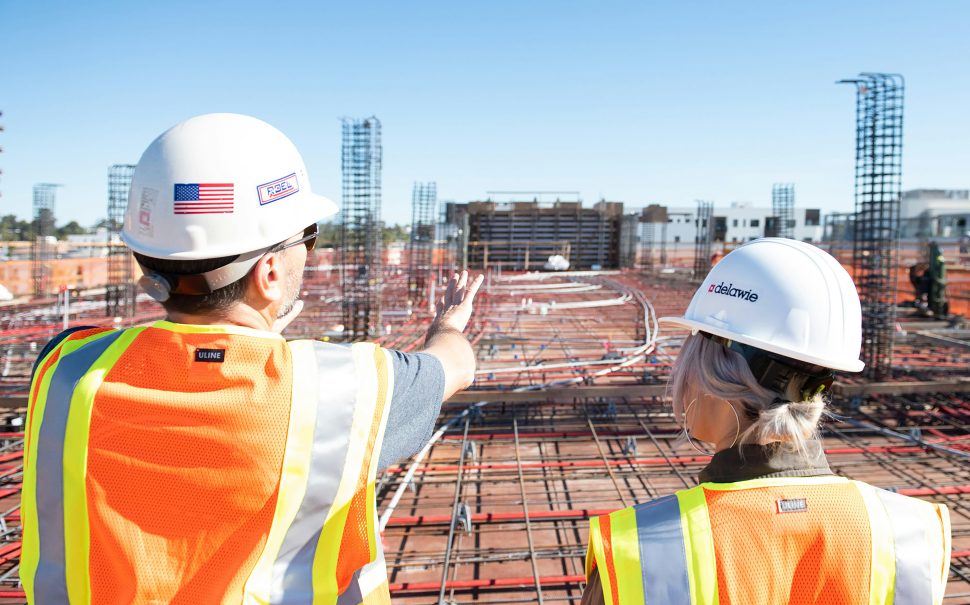Workplace safety in the UK can greatly benefit from innovative tools and technologies.
Leveraging advanced technologies like artificial intelligence (AI) and machine learning (ML) allows organisations to better protect workers by predicting and preventing accidents before they occur.
This proactive approach marks a significant shift in how companies manage health and safety risks, making workplaces safer and more efficient.
In safety-required sectors, integrating 99% accurate urine drug test kits can mitigate risks associated with substance misuse.
Rapid and affordable testing options provide valuable insights into employee health, promoting a safer work environment.
Additionally, these tests are important parts of trusted urine drug testing resources, contributing to overall workplace safety by guaranteeing that risks related to drug impairment are minimised.
Cutting-edge tools like 4D modelling and digital communication platforms are improving safety protocols.
These innovations improve hazard identification and facilitate better communication among team members.
By utilising these advanced practices, you are equipped to create a safer, more productive workplace that prioritises the health and safety of all employees.
Assessing risks and identifying hazards
Effective management of workplace safety starts with evaluating the dangers present and determining their potential impact.
This process includes implementing risk assessments, using techniques to identify hazards, and conducting regular safety audits.
Implementing risk assessments
To assess risks, start by identifying what might cause harm in your workplace.
Determine the likelihood and potential impact of these hazards.
Once identified, take steps to control or eliminate these risks.
List each risk and decide on actions to manage them.
It may involve changing work processes, providing protective gear, or altering the layout of a workspace.
Maintaining a record of the assessment helps track progress and updates.
Use risk assessments to refine safety strategies, addressing specific issues your workplace faces.
Regular reviews and updates keep assessments relevant as conditions change.
Hazard identification techniques
Spotting potential hazards involves keen observation and systematic investigation.
Begin by conducting walkthroughs of the work area to spot immediate and hidden dangers.
Discuss with employees to gain insight into risks they encounter during their duties.
Employ structured methods such as checklists or questionnaires to guide the process.
These tools help in capturing all possible hazards, ranging from physical dangers to health risks associated with materials used.
Consider modern solutions like technology-driven tools for real-time monitoring and analysis.
This may include sensors to detect environmental changes or wearable devices that track safety.
Such tools provide data that helps in understanding and mitigating risks.
Regular safety audits
Safety audits are key to maintaining a secure workplace.
Conduct them regularly to review all current safety measures.
Audits involve examining equipment, work procedures, and safety policies.
During an audit, check that all safety equipment functions correctly and protective measures are in place.
Observe the work habits of employees to guarantee compliance with safety regulations.
Document findings and note areas for improvement.
Use this information to develop new strategies or update existing protocols.
By performing audits routinely, you can effectively manage risks and adapt to any new challenges.
Adopting technological solutions
Implementing new technology helps improve workplace safety by offering timely data, reducing hazards, and automating responses.
The focus is on using smart devices and systems to prevent accidents and respond quickly when needed.
Integration of IoT for monitoring
The Internet of Things (IoT) plays a key role in workplace safety by connecting devices that gather and share data in real-time.
Sensors installed in machines can detect irregularities and alert managers about potential issues before they lead to accidents.
By using IoT, you can monitor environmental conditions like temperature and air quality, making it easier to maintain a safe work environment and address risks promptly.
This proactive approach reduces downtime and helps workers stay safe.
Wearable safety devices
Wearables are useful tools that can improve workplace safety by tracking worker activity and health metrics.
These devices can monitor heart rate, movement, and even fatigue levels.
Using data from wearables, safety officers can identify risky behaviours and design programmes to reduce injury.
Wearables also provide real-time alerts, keeping workers informed about their health and reminding them to take precautions during high-risk tasks.
This helps maintain a safer workplace for everyone.
Emergency response systems
Effective emergency response systems are important for reducing harm in the workplace.
Automated alerts and monitoring systems can quickly notify emergency services and staff in case of fires, chemical leaks, or other dangers.
Establishing clear communication channels and protocols using these systems guarantees everyone knows how to act quickly and safely.
By using technology to support emergency planning, you’ll improve coordination and response times, which can minimise damage and protect lives.
Data Analytics for Predictive Safety
Data analytics plays an important role in anticipating workplace safety issues.
By analysing historical data, you can predict potential hazards and take action before incidents occur.
Predictive analytics allows you to identify patterns and determine which areas need more attention, thus reducing the likelihood of accidents.
Regular analysis leads to more informed decisions about safety practices and helps allocate resources effectively, making the workplace safer over time.
Conclusion
Using innovative tools is a practical way for UK companies to improve workplace safety.
Technology like artificial intelligence and data analytics can identify hazards before they become problems.
Keeping employees safe also means using tools such as virtual reality for training.
Regular reviews of safety protocols are necessary.
Updating systems based on the latest technological advancements helps maintain a safe work environment.
You can create a safer workplace by staying informed of new developments and adapting them to your specific needs.
It’s important to engage with employees about the safety tools being used.
Allowing staff to provide feedback guarantees that the tools are effective and meet the needs of those they are designed to protect.
List of Innovative Tools:
- Artificial Intelligence (AI)
- Data Analytics
- Wearable Technology
- Virtual Reality (VR) for Training
Finally, commitment to safety and the use of new technology can lead to fewer accidents and a more productive work environment.
Picture credit: Free to use from Unsplash





